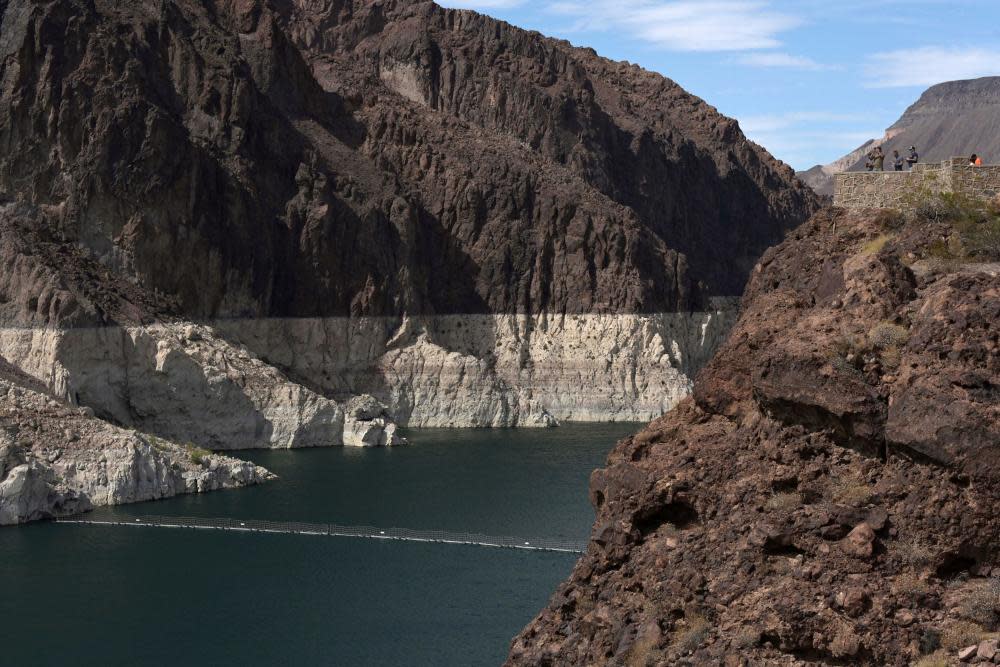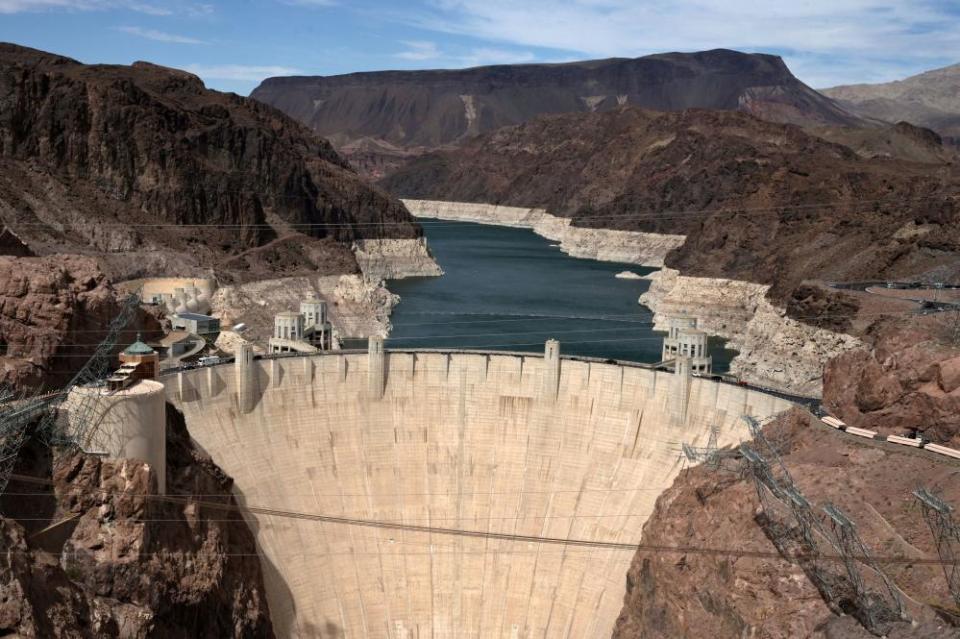Lake Mead: largest US reservoir falls to historic low amid devastating drought

Levels in Lake Mead – the largest US reservoir by volume – fell to historic lows on Thursday, as the region continues to face the effects of a devastating prolonged drought.
Stationed on the main stem of the Colorado River in the Mojave along the Arizona-Nevada border, Lake Mead was formed with the construction of the Hoover dam, which generates electricity for areas in Arizona, California and Nevada. It provides water for urban, rural and tribal lands across the south-west.
Related: ‘Truly an emergency’: how drought returned to California – and what lies ahead
Officials, who said the reservoir will be at its lowest since the 1930s when the dam was built, expect levels to get worse through another dry, hot summer. With no reprieve expected in the coming months, the human-made lake is currently at roughly 36% of its capacity.
In normal years, the dam produces enough electricity for 8 million people, but the water shortage will slow energy output while adding additional pressure on the increasingly water-starved systems across the west.
“Every foot of lake level decline means about six [megawatt] of lost capacity,” Patricia Aaron, the Bureau of Reclamation spokesperson, told CNN. The Hoover dam’s energy capacity had already dropped by 25% by Tuesday, and Aaron added that levels will continue to decline through the autumn this year.
The rapid decline has prompted plans for the first-ever water shortage declaration from the federal government, according to reports from the US Bureau of Reclamation released in April, which projected the record-breaking declines. The declaration, which will probably be issued in August of this year, would affect distribution to states and Mexico.

Roughly 75% of the American west is currently mired in “severe” drought, according to the US Drought Monitor, but the region has been strained by drought conditions for decades. The climate crisis has amplified effects of the dryness, as rising temperatures obliterated the already sparse snowpack and baked even more moisture out of the landscape.
The historic drought has caused the Colorado River system to decline to half its capacity, according to the US Department of Interior, which also reports that the basin has had the lowest inflows over a 16-year period in the 100 years records have been kept.
Roughly one in 10 Americans depend on the Colorado River for some of their water and the basin also provides irrigation for more than 5.5m acres in the south-west. Twenty-two recognized tribes depend on the river as a vital economic and cultural resource.
“The past 10 years of Colorado River runoff have been the driest in the river’s history, exacerbating a drought that spans more than two decades,” said Jeffrey Kightlinger, the general manager of the Metropolitan Water District of southern California in a statement responding to the expected federal declaration.
“The conditions we’re seeing this year highlight the threat of climate change and the drying trend we’re seeing on the river,” he added. “We must continue to work collaboratively as we begin longer-term discussions on how to address the river’s supply imbalance.”
Las Vegas recently became the first city in the US to ban “useless grass” around streets, offices and housing developments in an effort to conserve water. Steve Sisolak, Nevada’s governor, cited the “bathtub rings” in Lake Mead as a dire sign to act.
“It’s incumbent upon us for the next generation to be more conscious of conservation and our natural resources,” he said.

